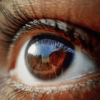Whether they’re learning online or in a classroom, about 80% of what a child is taught is presented visually. Unfortunately, it can be difficult for a child to understand their vision and how it should appear and feel. That’s why it’s essential to pay close attention to your child’s progress in school; if they’re struggling, their vision could be the cause.
The importance of eye exams extends beyond the classroom, and eye exams can also help your child develop some necessary skills such as:
- The ability to comfortably focus.
- Accurate eye movement skills.
- Eye teaming (confirming both eyes can work together).
- Visual acuity up close and from a distance.
A Child’s First Eye Exam
Their first comprehensive eye exam should occur around six to eight months old, also called a Wellness Check. It is important to rule out any major issues at this age. During this first eye exam, the optometrist will mainly focus on these three areas:
- Ocular Alignment: We will check to make sure the child can fixate on an object and follow it with their eyes as it moves. Ultimately, checking the child’s muscles and alignment of their eyes to rule out for example an eye turn (strabismus).
- Prescription Check: We can still check the prescription even though the child cannot give us feedback. The optometrist will do this by using a retinoscope which uses light to help measure the child’s prescription. We want to rule out any large prescriptions that should be treated early.
- Ocular Health: By using a few different lights such as a direct ophthalmoscope, the optometrist will check for ocular diseases and make sure the eye is healthy.
Signs and Symptoms Your Child May Have a Vision Problem
Kids under 19 are covered by OHIP to have their eyes checked once a year. In between visits, it’s essential to keep an eye open for potential problems. You can learn more about these problems and symptoms here. However, common symptoms could include:
- Bumping into things.
- Difficulty picking up small objects.
- Difficulty making eye contact.
- Excessive blinking.
- Headaches.
- Inability to focus or concentrate.
- Rubbing their eyes.
- Squinting often.
- The upper eyelid is drooping.
- Tilting their head a lot while talking or focusing.
Correcting Problems Early On
When it comes to caring for your eyes, it’s crucial to be proactive. We grew up with the idea that carrots are good for our eyes, but there’s so much more to consider. Dark green veggies and foods high in Vitamin E, Zinc and Omega 3’s are equally important. We also can’t forget that sunglasses will protect your kid’s eyes from UVA and UVB rays which can significantly impact the health of their eyes throughout the years.
Some vision problems can cause permanent damage, especially if they’re not corrected early. For example, Amblyopia (lazy eye) can cause the brain to start ignoring the weak eye. If left untreated, the child’s brain will start to only focus with their strong eye, causing the brain to ignore the weaker eye which will produce blurrier and blurrier images. However, the earlier amblyopia can be diagnosed and treated, the better the outcome to improve their vision.
Why Wait?
August has become a very popular time for kids to check their eyes, but why wait? Now that you understand the importance of consistent eye exams early in a child’s life and what to be on the lookout for, make an appointment before the back-to-school rush. We can’t wait to meet your little ones.



